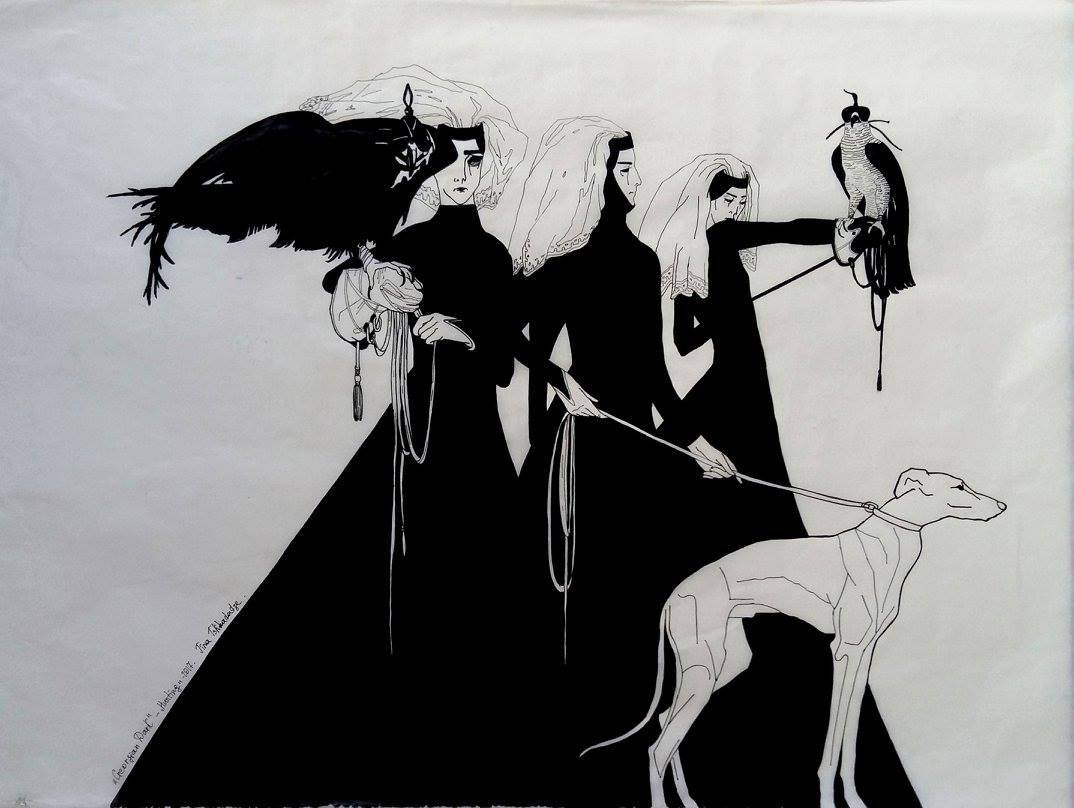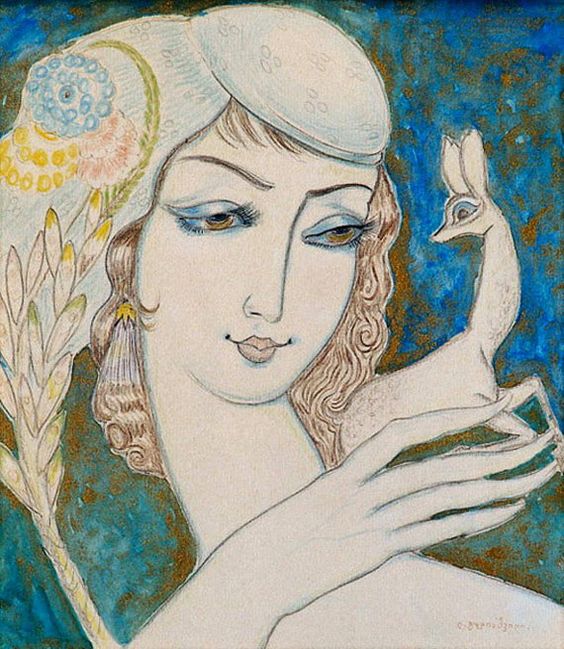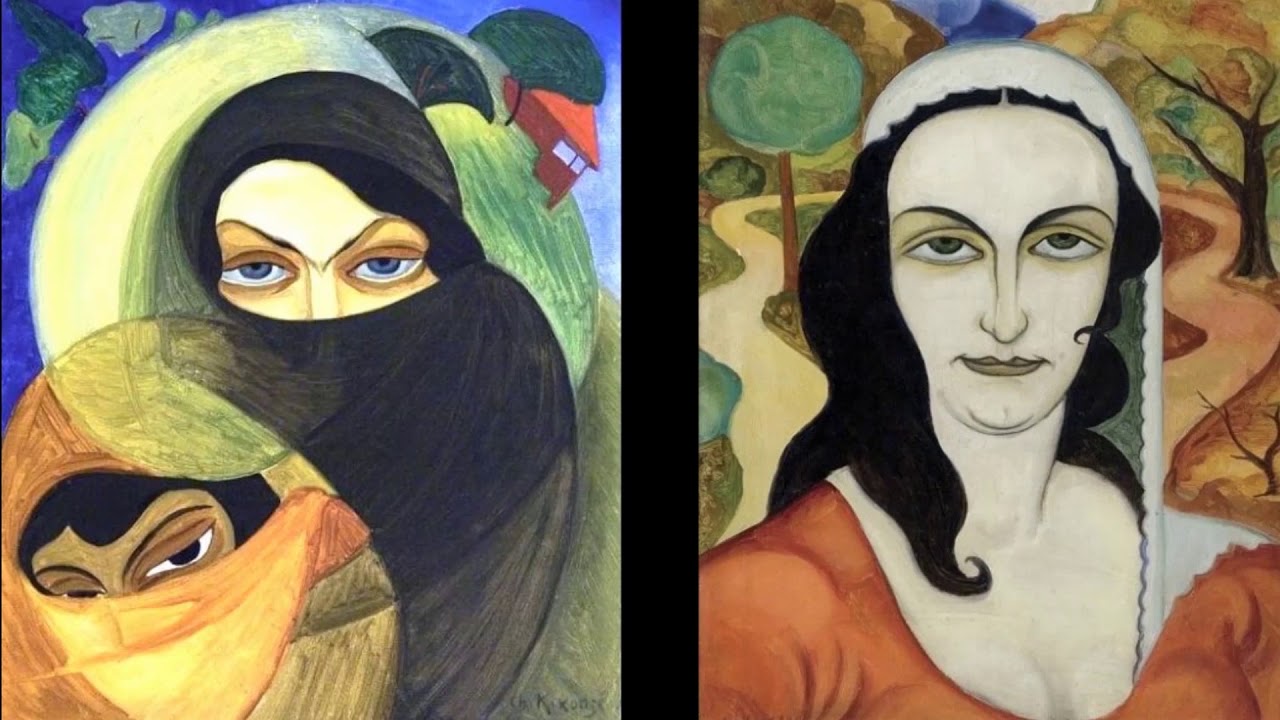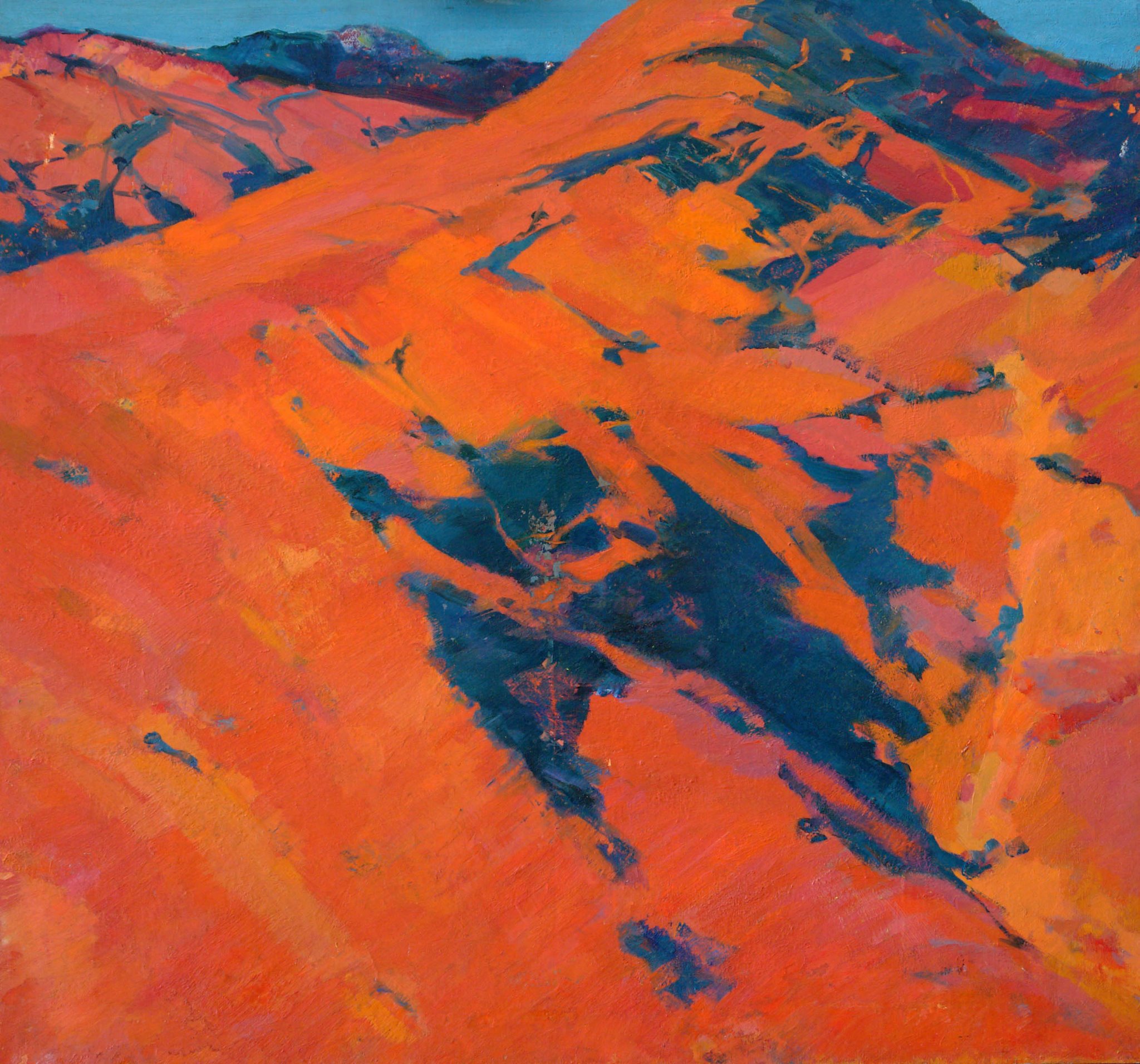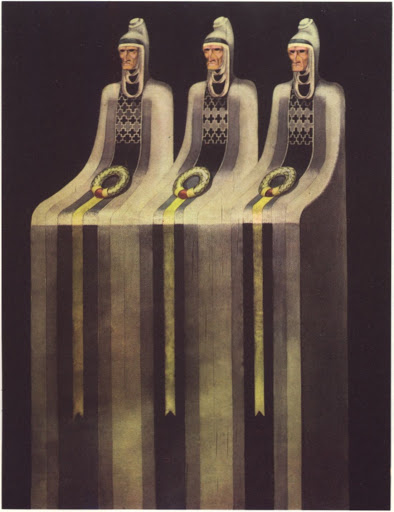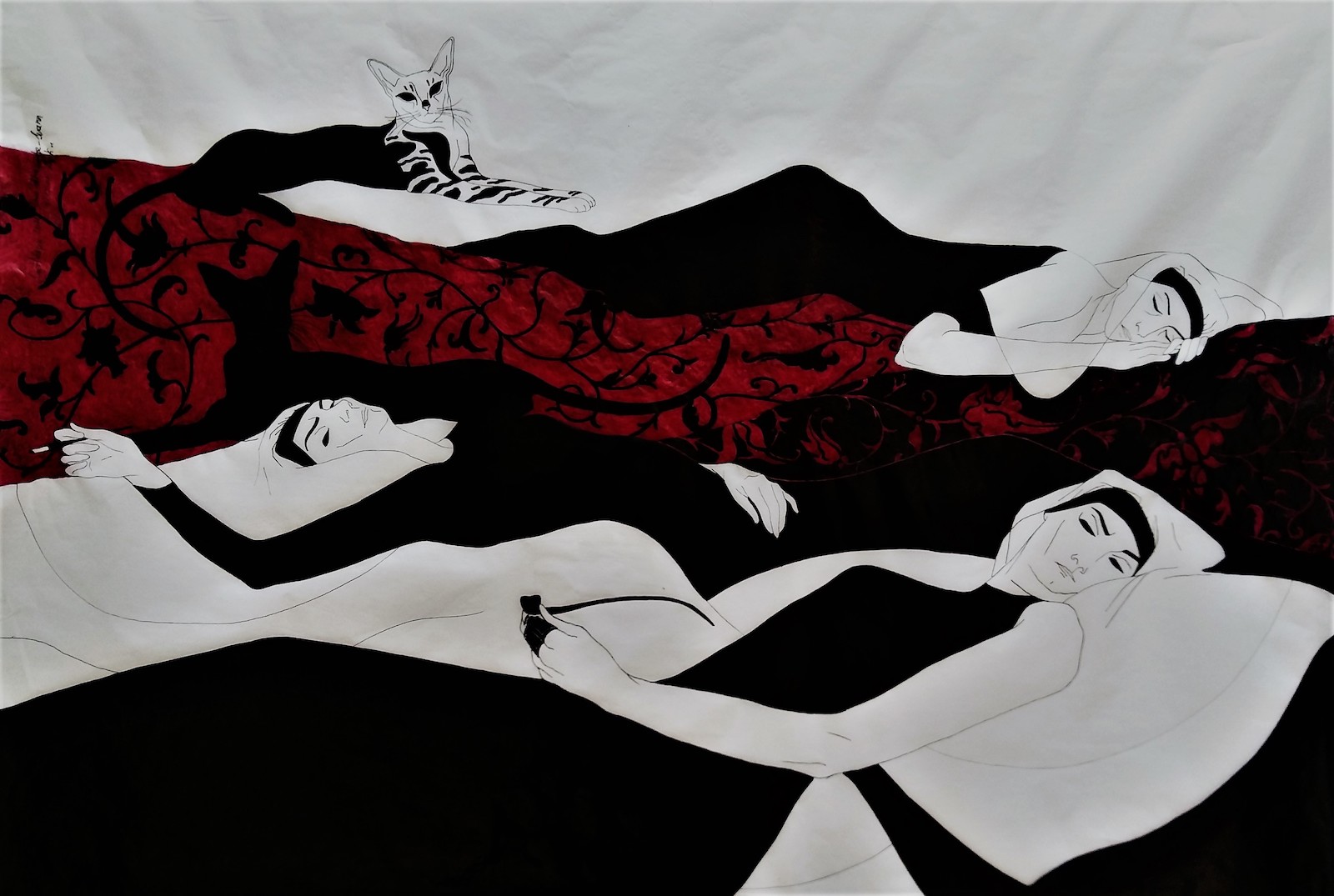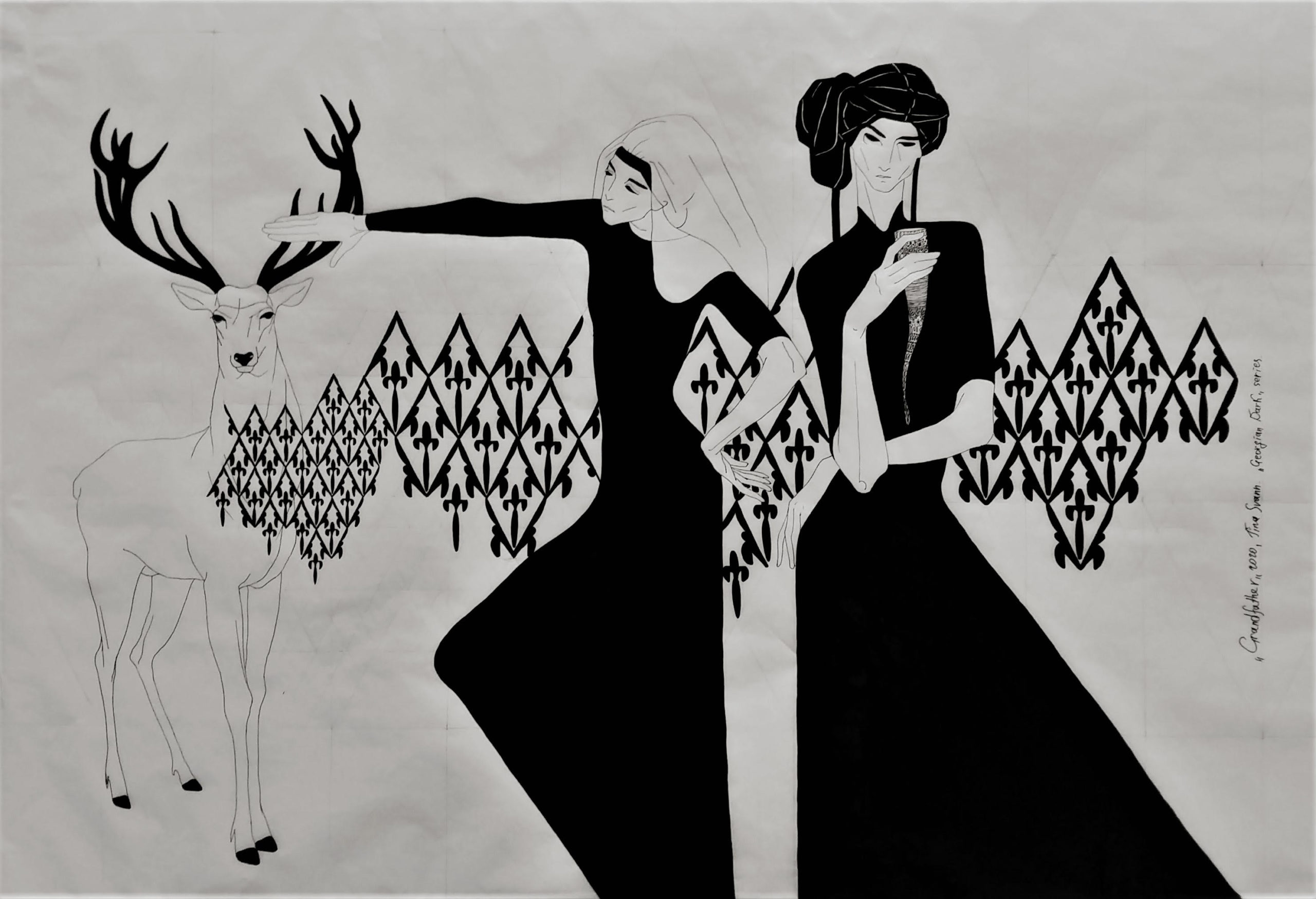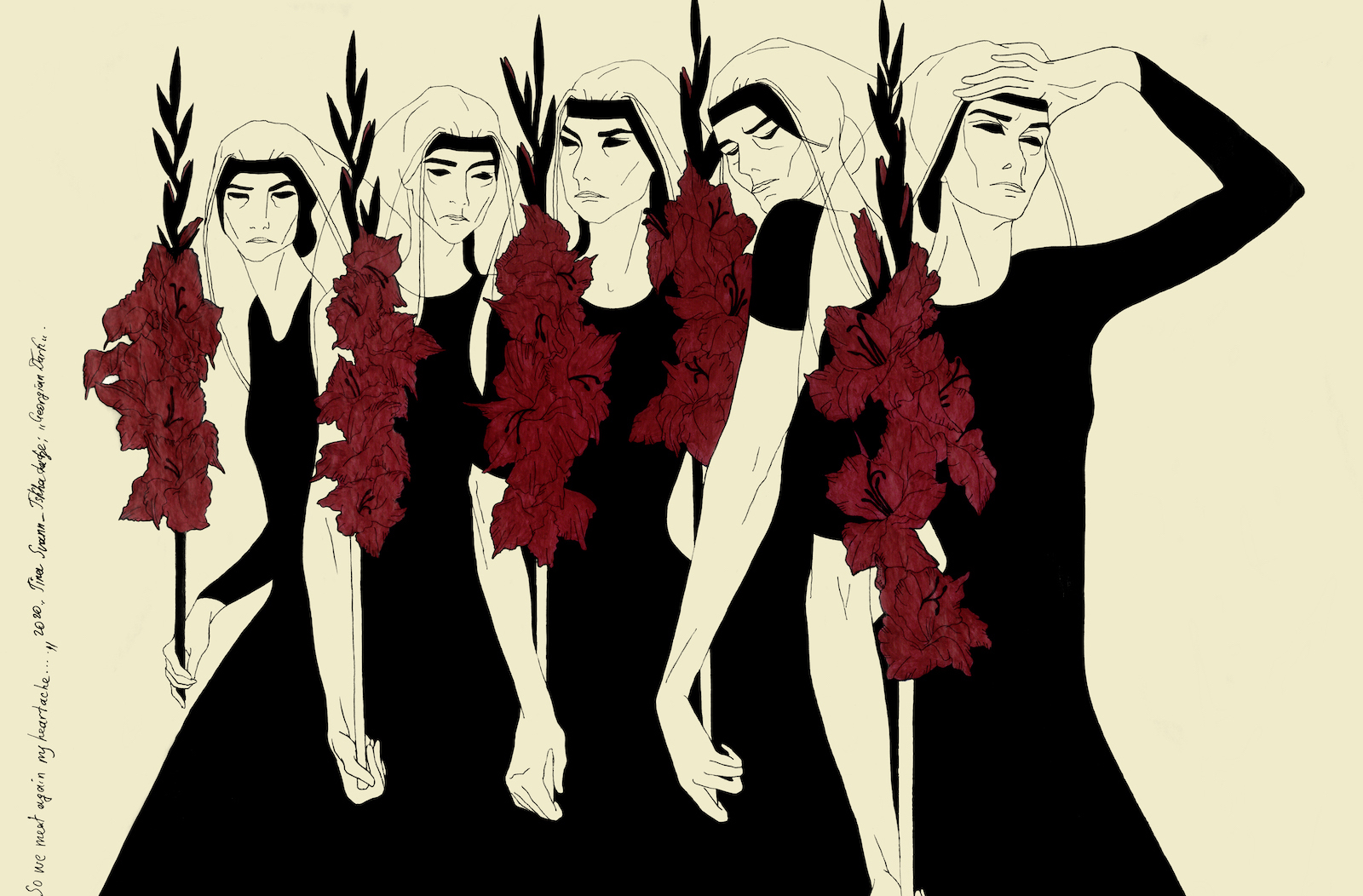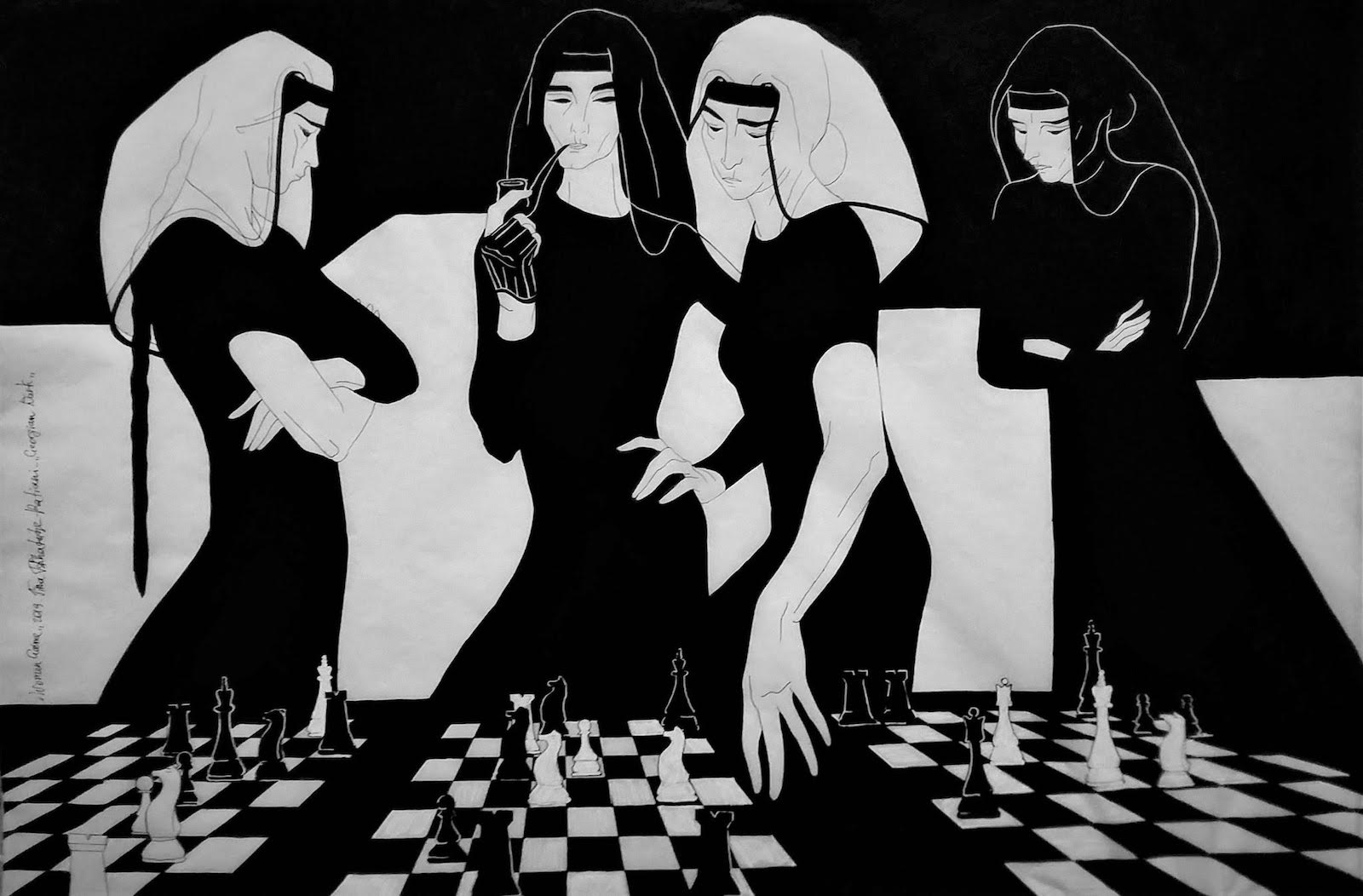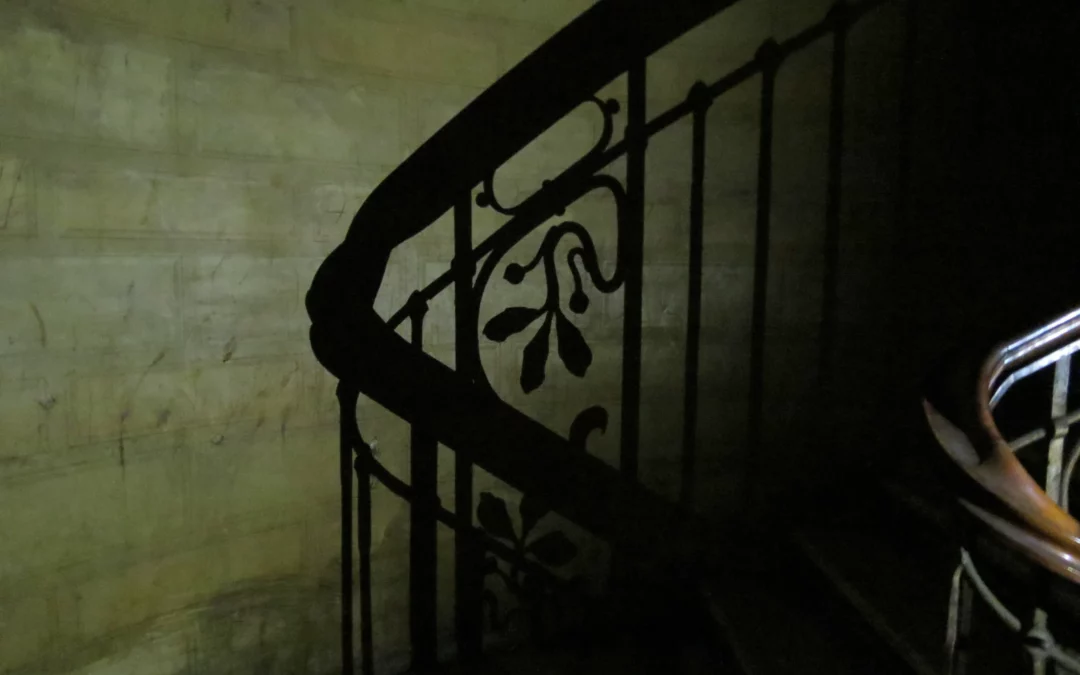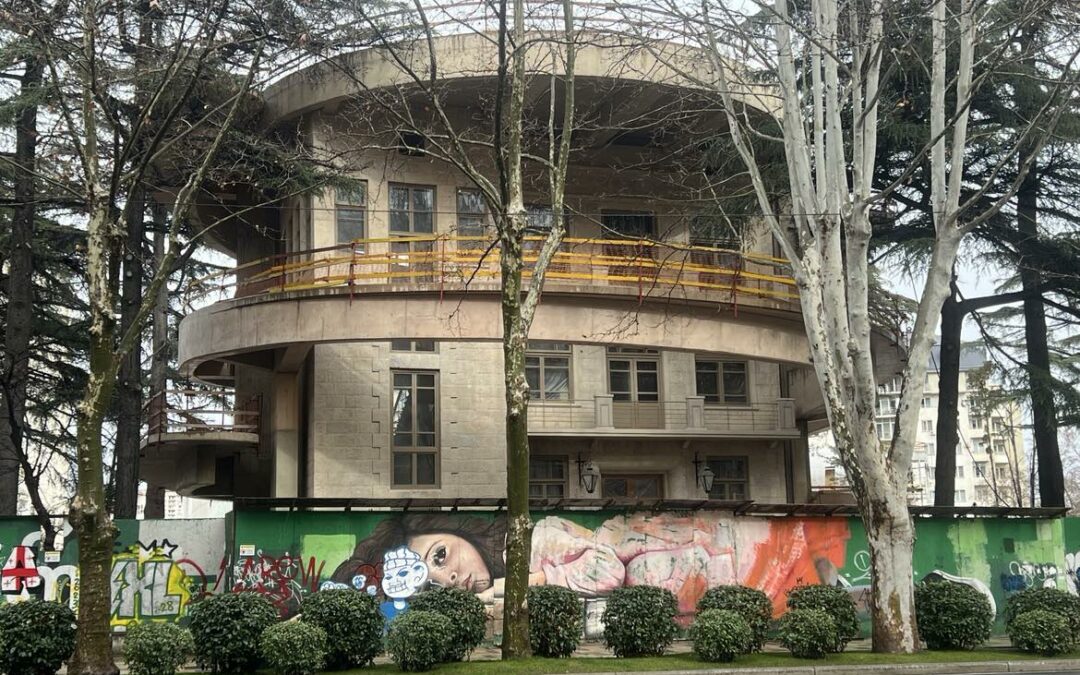My eyes, having seen all,
Came back to
The white chrysanthemums.
Issho ((1653–1688)
“They walk in shadow, yet towards the sun,” says Tina Tskhadadze, also known as Tina Svann, while gazing at her Georgian Darks or “The Guardians” as she refers to them.
✱ Hunting 2017, 50×70, mixed media on vellum.
The story of her art explorations traces back to her childhood. She says she already held a paintbrush when she was only one year old.
“I remember my grandfather, who was a historian, sitting next to me, picking up different publications of Vepkhistkaosani (illustrated by Sergo Kobuladze, Irakli Toidze, and Mihály Zichy) and reading them for me. I was his first granddaughter and he’d let me scribble in the books. As a kid, I remember how bad I wanted to be a part of the story.”
Years later, Tina discovered Shota Rustaveli, and then, at the age of nine, she got carried away by Lado Gudiashvili’s work.
“As a young person, I couldn’t understand why I liked his paintings so much. His aesthetics have followed me to this day, and I return to his work over and over again.”
✱ Lado Gudiashvili is a Georgian monumentalist of the 20th century. He was a member of the Board of the “Association of Georgian Painters”. He is famous for his Anti-Nazi Cycle of Ink drawings, and was referred to as “Georgian Goya”.
After Lado Gudiashvili, she was bewitched by Honoré Daumier. Tina was trying to understand whether it was the painting techniques and methods or the mood of the work that was influencing her style.
“I liked the stylistics of Daumier, his darknesses, and silhouettes. I understand now that working with dark and bright colors goes back to Daumier.”
Khita Kutateladze’s work filled her life with suddenness. For her, Khita is a painter, who maximally shows his abilities. Khita gave her frameworks of view and thought. Behind her newly-acknowledged unconstrained feeling of freedom, she realized that she could candidly take risks.
Introduction to Georgian Dark
After Khita, Tina was captivated by Shalva Kikodze and Petre Otskheli. She had already started working on Darks but the idea had yet to materialize.
✱ Shalva Kikodze was a Georgian expressionist painter of the late 19th century and early 20th century. Most of his works are now displayed at the Art Museum of Georgia, in Tbilisi.
“Otskheli “sorted me out”. The series of Georgian Dark had started and I could see the direction the work was already taking. It is, in a way, a symbiosis of all the seeds each artist has planted in my imagination.
She thinks the process of painting, just like film directing, needs particular experience and maturity. “Sometimes it feels like you’re living in two different worlds at the same time,” she told me while caressing her cat, Richi, which is its temporary name since as she noted, a cat will dictate what kind of name it will need when it’s grown. “As of now, the cat’s name is Richard the Lionheart.”
✱ By Guram (Khita) Kutateladze. Khita Kutateladze was a 20th-century Georgian artist. He elaborated on his own concept of landscapes and views. He was a recipient of the Rustaveli Prize.
✱ Petre Otskheli was a Georgian Modern set and Costume Designer and Georgian avant-garde artist of the 20th century. He is best known for his sketch for Winged Painter (1936).
First Georgian Dark
While talking about her life as a painter, Tina elaborates on her ways to find self-expression.
“I had a hard time getting to the core of Georgian Dark series. I was going through difficult times and through constant dialogue with myself, I discovered things I wasn’t aware of. I had to let go of painting myself. Once I was able to do that, I felt the flow of abstract sensations and emotions.”
Georgian Darks have black eyes. Tina did not want the viewers to focus on the movement of the eye. This is eternity – everything one could have felt holds irresistible melancholy – the melancholy of reserved energy.
Georgian Darks are women who move forward while steadily overcoming obstacles and resistance. They walk in the shade, yet toward the sun. They are Bright Darks. The women became an archetype and they became guardians that protect everything.
“If earlier in the series I was using two main characters in my paintings – a protector and the one who is protected, now my work evolves around only one character – the guardian. Heroes of Dark are slightly masculine, some drag over Chokha, some of them are playing backgammon while others water the garden with a long pipe. I am not pursuing anything in particular, this inspiration hit me unexpectedly.”
✱ CatNap 2020, 60×88, mixed media on vellum, from the series Georgian Dark.
The Deer Paintings
“When I was painting these, I could not get rid of the feeling that I was painting someone familiar. Towards nearly finishing my work, I realized that I was actually painting my Grandfather as a deer. The nobility and guidance are the characteristics of deer and that reminds me of my grandfather.”
✱ Grandfather 60×88, mixed media on vellum.
According to Tina, her paintings are stylistically modern, perhaps modern art-deco: the details such as the headband, the chikhti, and war headgear are all vintage, but it is important to make them relevant for the present day.
“As for the color red – I was ready to come out of blacks and was going to do it with blue according to Goethe’s Theory of Colors. But then I realized that blue also pulls me into black, to the eternity, and the cosmos.
So, she went to the complete opposite spectrum. Coronavirus might have played a role in this to some extent.
The period is filled with redness for me, but I needed to find the exact red I was looking for and the red I ended up with has the color of blood.
✱ So we meet again my heart … 2020, 50×70 from the series Georgian Dark.
Tina paints on parchment – the color of Ivory fits well with the paintings. She picked the softer paper as a regular paper seemed to rough for the job. The parchment paper seemed to have gained the vulnerability and decency of a woman, the way Tina intended to.
While painting Tina feels genderless. As a student at the academy, she was told that she had men’s hands. It was meant to be a praise. However, it really irritated her.
I’m not bothered by what it means to be a woman or a man while I’m painting.
✱ Women’s Game 2019, 50×70, mixed media on vellum.
In the first few paintings, Georgian Darks are represented in traditionally male roles. Tina’s protest is hidden in subtle details of her drawings. She plays with the viewer’s senses and challenges them to see beyond the beautiful forms of her characters.
One of the most memorable exhibitions that Tina participated in was Drawing Exposition in Film-Fabrika.
“About 40 artists represented their works. The artwork was hung by ropes. This exhibition literally bewitched me because of its content. It was quite original.
At the end of the interview, we had a small chat about Tbilisi. She said she loves Tbilisi as much as she hates it, the city irritates her and calms her down at the same time.
“I have a love-hate relationship with Tbilisi. I fight with her while I hold her in my arms. Kartlis Deda as an archetype is shown through my work. I think that women have held the main role in Georgian history, only it was not always remembered. But for me, this is a concept to which I always come back to.”
✱ Akido 2019, 70×48, mixed media, from the series of Georgian Dark.
Tina Tskhadadze is now an associate professor at the Faculty of Fine Arts, Tbilisi State Academy of Arts. Her artworks are featured in different catalogs and purchased by private collectors in Tbilisi, London, Budapest, Moscow, Riga, etc.


